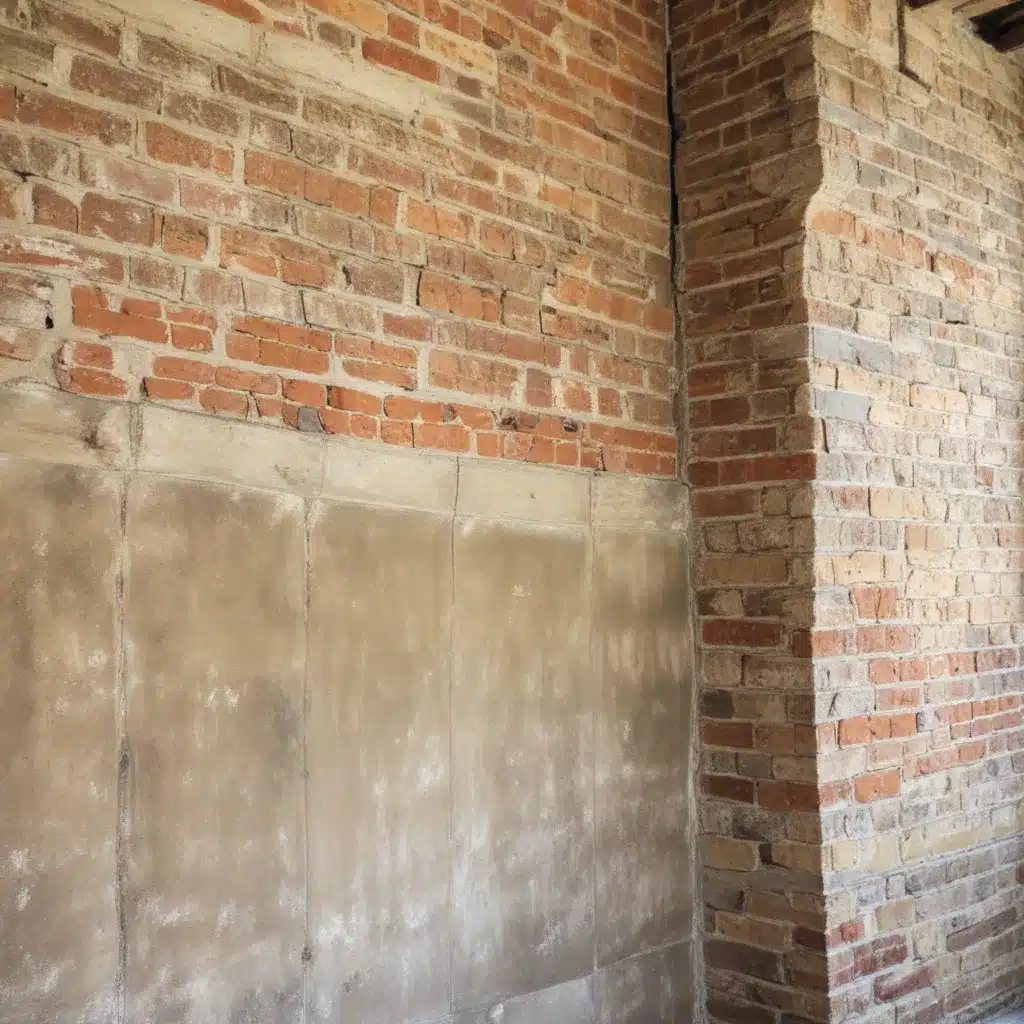
As an experienced damp proofing specialist, I’ve had the privilege of working on some of the most remarkable historic buildings in the UK. Over the years, I’ve witnessed firsthand the challenges posed by moisture intrusion and the critical importance of implementing effective waterproofing strategies to safeguard these architectural treasures.
Confronting the Scourge of Damp: A Specialist’s Perspective
One of the most common issues I encounter when working with historic structures is the relentless battle against rising damp. This insidious problem can wreak havoc on the structural integrity and aesthetic appeal of a building, not to mention the health and well-being of its occupants. As a damp proofing specialist, I’ve had to develop a deep understanding of the underlying causes and the most effective solutions to combat this persistent challenge.
Through rigorous research and extensive on-site experience, I’ve come to appreciate the nuances of historic building materials and construction methods. Traditional materials like lime mortar, stone, and timber often behave differently when exposed to moisture than their modern counterparts, requiring a more tailored approach to damp proofing. For example, the use of impermeable barriers or the application of inappropriate sealants can inadvertently trap moisture within the building fabric, leading to further deterioration.
Embracing the Past, Safeguarding the Future
One of the core principles I’ve adopted in my work is the importance of preserving the original character and integrity of historic buildings. When addressing damp issues, I strive to find solutions that respect the building’s heritage while ensuring long-term protection against moisture ingress. This often requires a delicate balance between modern waterproofing technologies and traditional building conservation practices.
In recent years, I’ve been particularly excited by the emergence of innovative damp proofing techniques that seamlessly integrate with historic structures. For instance, the development of breathable, vapor-permeable membranes has revolutionized the way we approach moisture management in older buildings. These materials allow the natural movement of moisture within the walls, preventing the formation of harmful condensation while maintaining the essential permeability that historic structures require.
Harnessing the Power of Technology
Alongside these advancements in materials, I’ve also witnessed the transformative impact of technology on the field of damp proofing. The use of advanced diagnostic tools, such as thermal imaging cameras and moisture meters, has enabled me to identify the root causes of damp issues with unprecedented accuracy. By pinpointing the sources of moisture ingress, I can then develop targeted and highly effective solutions, ensuring that the historic fabric of the building is protected.
Moreover, the integration of data-driven analytics and Building Information Modeling (BIM) has revolutionized the way I approach damp proofing projects. By leveraging these digital tools, I can create detailed, three-dimensional models of a building, allowing me to simulate the impact of various waterproofing strategies and make informed decisions that optimise long-term performance.
Embracing a Holistic Approach to Moisture Control
In my experience, addressing damp problems in historic buildings requires a comprehensive, holistic approach that goes beyond traditional damp proofing techniques. Effective moisture management often involves a combination of strategies, including the installation of high-performance ventilation systems, the incorporation of dehumidification technologies, and the implementation of strategic drainage solutions.
By adopting a multifaceted approach, I’ve been able to tackle even the most stubborn damp issues, ensuring that the buildings under my care remain structurally sound, aesthetically pleasing, and safe for their occupants. This holistic mindset has also led me to collaborate closely with other building professionals, such as architects, structural engineers, and conservation specialists, to ensure that our solutions are truly integrated and sustainable.
Upholding Safety and Compliance
As a damp proofing specialist, I’m acutely aware of the importance of safety and compliance in my work. Historic buildings often present unique challenges, from the presence of hazardous materials like asbestos to the need to navigate complex planning and heritage regulations. Ensuring the safety of my team and the building’s occupants is always my top priority, and I have developed rigorous protocols to mitigate risks and adhere to the highest industry standards.
This commitment to safety extends to the waterproofing materials and techniques I employ. I carefully research and evaluate the environmental impact of the products I use, ensuring that they not only effectively address damp issues but also comply with relevant environmental and health regulations. By staying at the forefront of industry developments, I’m able to offer my clients sustainable, long-lasting solutions that safeguard both the building and the well-being of everyone involved.
Embracing the Future of Damp Proofing
As I look to the future, I’m excited by the prospect of even more innovative damp proofing and waterproofing technologies. The recent advancements in materials science, such as the development of self-healing concrete and advanced polymer-based coatings, hold enormous potential for historic building preservation.
Moreover, the integration of smart home technologies and the Internet of Things (IoT) promises to revolutionize the way we monitor and manage moisture levels in historic structures. Imagine a future where sensors embedded within the building fabric continuously track humidity, temperature, and other environmental factors, providing real-time data to inform our damp proofing strategies.
Conclusion: A Call to Action
As a damp proofing specialist, I’m passionate about preserving the rich architectural heritage of the UK. Through the application of cutting-edge technologies, the adoption of holistic moisture management approaches, and a deep respect for the unique characteristics of historic buildings, I believe we can safeguard these treasures for generations to come.
I encourage homeowners, building managers, and construction professionals to embrace the transformative power of innovative damp proofing techniques. By working collaboratively with experienced specialists like myself, we can unlock the full potential of historic structures, ensuring that they not only withstand the test of time but also continue to inspire and captivate us with their timeless beauty.
Together, let’s embark on a journey of preservation, where the past and the future seamlessly converge, and where the scourge of damp is vanquished, allowing our architectural legacy to thrive. Visit Addamp Proofing to learn more about our expertise and how we can help safeguard your historic property.

